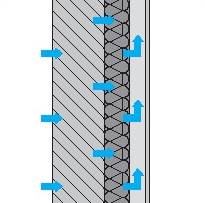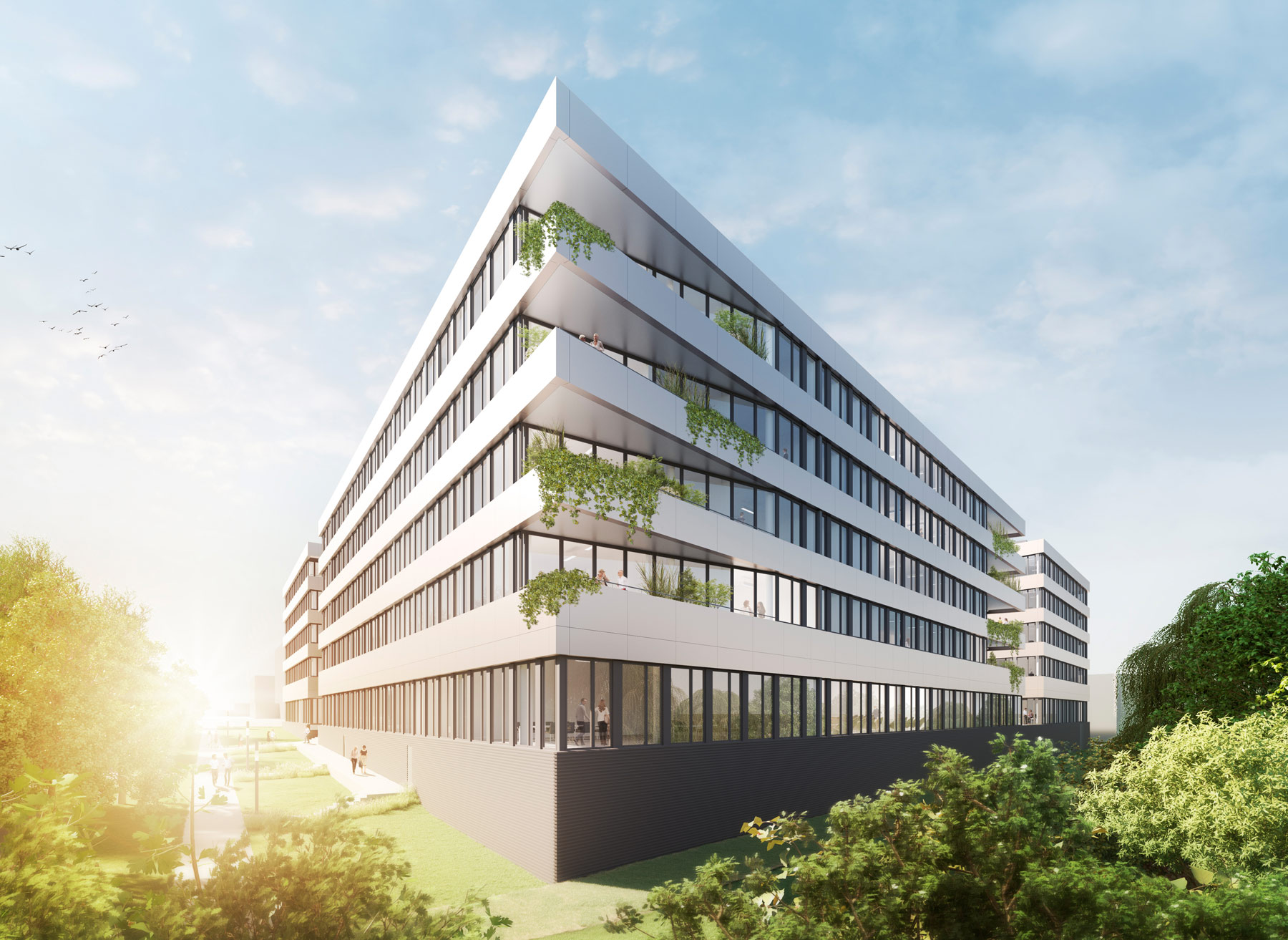Construction physics significance of suspended rear ventilated facades vhF
One of the principle construction physics roles of building envelope products is the protection against condensation. Suspended rear ventilated facades can guarantee the necessary protection against condensation effectively. It is the role of the rear ventilation in this process to keep the structure dry through a constant stream of air between the rear ventilation space and the external air. Steam occurring (new-build moisture, moisture from use) is led off to the outside without condensation forming.
Open joints in the façade cladding present an additional connection to the outside air. A further construction physics use alongside the heat insulation in summer as well as winter. With the correct construction configuration of the rear ventilation space up to two-thirds of the heat loading can be kept away from the inside of the room. In this way it becomes clear that external walls with suspended rear ventilated facades also have a considerable positive influence on the climate of the room within.
Alongside protection from condensation, protection against the effects of moisture ingress is of particular importance. Suspended rear ventilated facades are a construction method attributed to Requirements Group III (requirements for strong driving rain; annual amount of rainfall > 800 mm).
The suspended rear ventilated rainscreen cladding vhF minimises thermal bridging on the part of the building and provides buildings with a complete protection in all climatic conditions.

